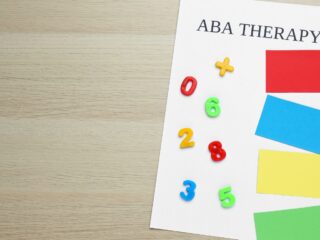
Early childhood trauma is a significant factor in shaping an individual’s mental and emotional well-being. Experiences such as neglect, abuse, parental substance use, or exposure to violence can have long-term consequences, including an increased risk of addiction. Studies suggest that adverse childhood experiences (ACEs) can alter brain development, emotional regulation, and coping mechanisms, making substance use a likely escape for affected individuals.
This article explores the connection between early childhood trauma and addiction, the science behind it, and ways to prevent and heal from these early life challenges.
The Link Between Childhood Trauma and Addiction
Understanding Adverse Childhood Experiences (ACEs)
The concept of Adverse Childhood Experiences (ACEs) was introduced through a groundbreaking study by the Centers for Disease Control and Prevention (CDC) and Kaiser Permanente. ACEs include traumatic events such as:
– Physical, emotional, or sexual abuse
– Neglect and parental absence
– Exposure to substance abuse within the household
– Witnessing domestic violence
– Parental mental illness or incarceration
Research shows that individuals with four or more ACEs are four to twelve times more likely to struggle with substance abuse later in life (Felitti et al., 1998).
How Trauma Alters Brain Development
Childhood trauma affects brain development, particularly in areas related to stress response and emotional regulation. Studies in Neuroscience & Biobehavioral Reviews indicate that trauma alters the function of the amygdala, hippocampus, and prefrontal cortex—areas responsible for managing emotions and impulse control (Teicher et al., 2016).
When these brain regions are impacted, individuals may develop:
– Heightened stress sensitivity
– Difficulty regulating emotions
– Increased impulsivity and risk-taking behaviors
These changes create a vulnerability to substance use as individuals seek relief from emotional distress.
The Role of the Stress Response System
Chronic childhood trauma keeps the body in a constant state of stress, leading to dysregulation of the hypothalamic-pituitary-adrenal (HPA) axis. This dysfunction results in higher levels of cortisol (the stress hormone), which increases the risk of anxiety, depression, and addiction (De Bellis & Zisk, 2014).

Substances like alcohol, opioids, and stimulants temporarily relieve stress by affecting the brain’s dopamine system, reinforcing dependency and addiction over time.
Why Trauma Survivors Turn to Substances
Self-Medication Hypothesis
The self-medication hypothesis suggests that individuals with unresolved trauma use substances to numb emotional pain. According to a study in Addictive Behaviors, people with a history of childhood trauma are significantly more likely to develop alcohol and drug dependence as a coping mechanism (Khantzian, 2018).
Emotional Dysregulation
Trauma survivors often experience extreme mood swings, irritability, and emotional instability. Substances provide temporary relief by altering brain chemistry and creating a sense of control, even if it is short-lived.
Risk-Taking and Impulsivity
Due to trauma-related brain changes, some individuals develop poor impulse control and are more likely to engage in high-risk behaviors, including substance experimentation and addiction (Everitt & Robbins, 2016).
Prevention and Healing from Trauma-Related Addiction
Early Intervention and Therapy
Early intervention can reduce the likelihood of addiction in trauma survivors. **Trauma-focused cognitive behavioral therapy (TF-CBT)** and **eye movement desensitization and reprocessing (EMDR)** are proven methods for addressing childhood trauma and reducing substance abuse risk.
Building Healthy Coping Mechanisms
Replacing substance use with positive coping strategies can prevent addiction. Effective techniques include:

– Mindfulness and meditation for emotional regulation
– Exercise to release endorphins and reduce stress
– Journaling and expressive arts to process emotions
Support Systems and Community Healing
Strong support systems play a crucial role in recovery. Engaging in group therapy, 12-step programs, and peer support networks like Alcoholics Anonymous (AA) or Narcotics Anonymous (NA) fosters connection and healing.
Addressing ACEs in Public Health Policies
Communities can reduce the impact of childhood trauma through:
– Early childhood education programs promoting resilience
– Trauma-informed care training for educators and healthcare professionals
– Accessible mental health services for at-risk families
Conclusion
The impact of early childhood trauma on addiction risk is profound. Altered brain development, emotional dysregulation, and chronic stress increase vulnerability to substance use as a coping mechanism. However, with early intervention, trauma-informed therapy, and strong support systems, healing is possible.
By recognizing the connection between trauma and addiction, society can take proactive steps in prevention, treatment, and public health initiatives. Addressing childhood trauma not only reduces addiction rates but also fosters healthier, more resilient individuals and communities.











